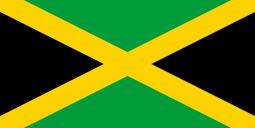
This week was very vigorous. I participated in several team-building exercises that required me to think about Jamaican culture and its influence on other cultures. My biggest takeaway from this activity was revealing American biases towards Jamaican entertainment. Contrary to popular belief, the Jamaican entertainment industry is a mixture of Jamaican heritage and popular culture. This caused me to understand that reggae music became so popular in Jamaica in the late 1960s because it connected so many people who were fighting for their civil rights. Jamaican history is deeply rooted in celebrating freedom and independence. As I sat in front of my computer screen viewing the virtual tour of the University of the West Indies, I understood now why Jamaican pride and unity are important to many Jamaican-American students. The Jamaican flag is a symbol of perseverance and resilience itself. Each of the colors means something significant. Firstly, yellow represents the natural wealth and beauty (especially the sunlight) of Jamaica’s landscape. Secondly, green represents agriculture and hope. And lastly, black, on the Jamaican flag, stands for the creative minds and perseverance needed to overcome the difficulties of the nation. When the professor was explaining this in my virtual session, I could feel the enthusiasm and reverence. It fascinated me that the University of the West Indies had so many historical landmarks that were important in Jamaican history. It was founded in 1948 as an oasis for educating students who wanted to involve themselves in social change that quickly expanded into an educational institution that spans six different campuses. One of the landmarks that stood out to me was the Aqueduct on the UWI campus in Mona, Jamaica. This stood out to me because this was a mechanism that brought water throughout the landscape when it was the Hope Estate during the 18th century when it was a working plantation. If we would have traveled to Jamaica before the rise of the pandemic, we would have been able to see it on the university’s campus.
One of the major landmarks that I would have loved to have seen in Jamaica is Emancipation Park. This is a well-known tourist attraction I was looking forward to seeing in person. This is a public park that opened the day before Emancipation Day on July 31st, 2002. In the Jamaican Prime Minister P.J. Patterson’s address, he emphasized that the park was built as a “commemoration to the end of slavery.” Sometimes we forget how lucky we are to live at a time such as this where although there are some remaining struggles, there is evidence of progress. During my virtual study-abroad experience, I am reminded of the sacrifices of so many people who were forced into the slave trading system in Jamaica and other Caribbean islands. This encourages me to look into the history and cultures of others and make significant connections to my own cultural history.
